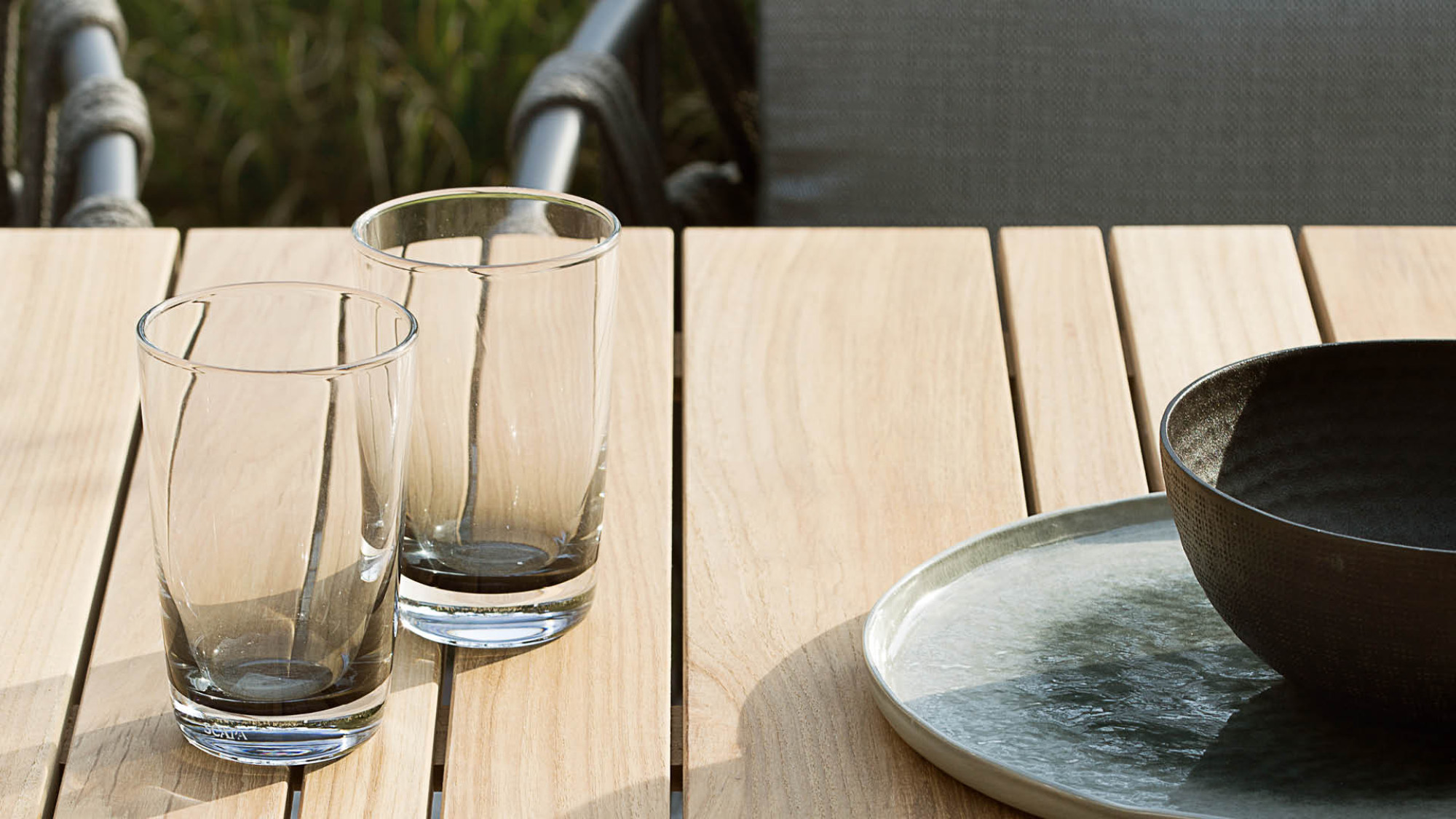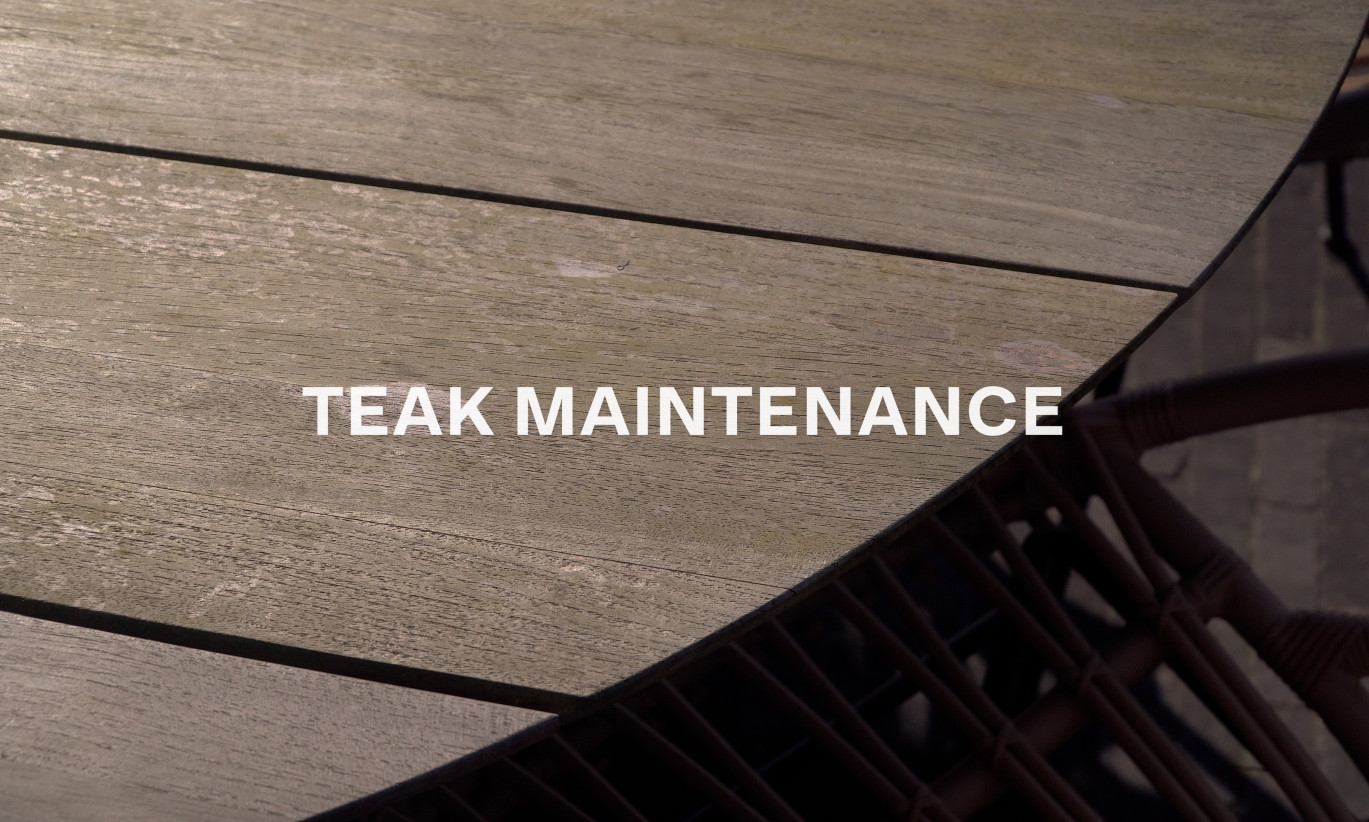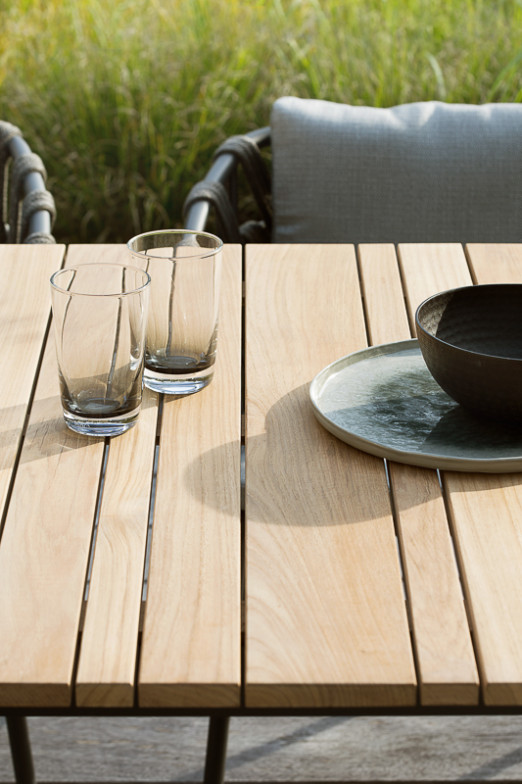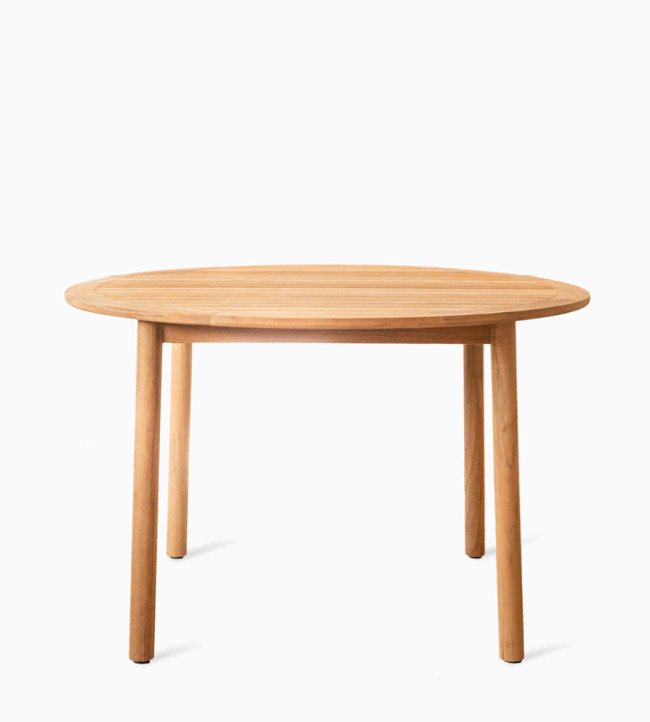Teak

About teak
It is essential to realize that wood is a natural material with its own characteristics. Variations in wood grain, color, knots and other natural characteristics are inherent in solid wood. We believe these imperfections only add to the charm of your table. Because wood is a natural product, it will react to influences from its environment.
We want you to know this: it is quite possible and quite normal for your table to change over time. However, because wood is a living product, you should take some precautions to ensure that it lasts as long as it is meant to.

How to care for your teak furniture?
Daily care
Clean your teak furniture with a damp towel or sponge using a mild solution of water and non-aggressive soap.
Address persistent stains
Grease stains: These are natural and usually fade with sun exposure. For faster removal, use a teak degreaser and scrub gently with a brush, followed by rinsing with clean water.
Mildew or black stains: Are often caused by rainwater or sap from trees. Avoid placing furniture under trees. Lightly sand affected areas with fine sandpaper to remove these stains
Wine or stubborn stains: Use a weak solution of bleach and water with detergent to clean the surface.
If you wash your furniture occasionally with a soapy water, it will take on a beautiful silver-gray color.
Natural characteristics
Teak is a deciduous hardwood tree and, contrary to popular belief, comes from the highlands and not tropical rainforests. No other wood has the same exceptional strength and durability as teak. Its unique texture and leathery smell are due to its high oil content.
These properties, combined with the wood's high density, prevent warping and rotting, allowing the furniture to remain outdoors in all conditions without maintenance or preservatives.
However, like any wood species, teak is a natural product and therefore fluctuations in temperature and humidity can cause cracks in the surface, especially in the end grains. This is normal and does not affect the durability or strength of the wood.
Color variations within a new teak surface are typical and tend to diminish once exposed to sunlight. The gradual process of color fading due to sun drying can take weeks to months, depending on the intensity of sunlight and weather conditions. Teak undergoes significant transformation, especially during initial exposure to sunlight.
Maintenance tips
Left outdoors, untreated teak will adjust to the elements over the years and the color of the wood will change to an attractive silver grey, aided only by an occasional washing with warm soapy water in order to discourage moss.
The prized golden-brown hue is achieved gradually, akin to a natural sun tan, though the interim appearance may lack the desired consistency. Certain manufacturers opt to expedite the color-evening process by treating it with chemicals. However, we refrain from such practices to avoid unnecessary chemical usage, without compromising on quality.
We do not recommend the use of teak oil or any other wood oil on teak that is to be used outdoors. Teak is already a naturally ‘oily’ wood and the addition of further oil does not add any additional protection. However, should you wish your teak to keep looking the same as it does when it is fresh out of the box, it can be sealed when new with Golden Care Teak Protector.
Still, untreated teak is not stainproof. Should you wish to fully protect your teak furniture against stains, then you can apply the Golden Care teak shield once or twice a year. This is an invisible layer which will allow your furniture to go to a beautiful silvery grey while preventing any liquids from penetrating the wood.





